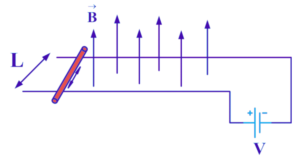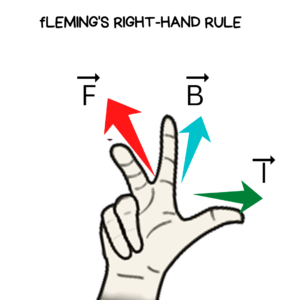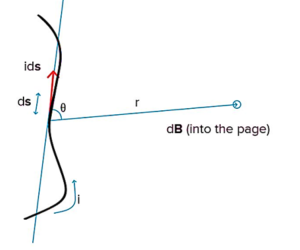Introduction
Every day, new technological components are developed as technology advances throughout the globe. Electricity powers every other home, public space, and industry. People utilise electricity, and they use it for a variety of things. But how is it that this electric current has a particular level of power and continues to flow without any breaks? It is done with the aid of an object known as a conductor. Electric current may readily flow via the conductor. A conductor is built into anything that uses electricity to operate. These currents produce forces that flow in one direction. Let’s discover more about it.
Current Carrying Conductor
A conductor that is transporting current can withstand the current’s force. Each current has a specific voltage that defines the electrical power. Electric bulbs can burst at high voltage, whereas low voltage results in weak electric current. There is no electric field surrounding the conductors. Unless a charge or electric field is given to it, it is neutral. The conductor’s sole responsibility is to transmit the current uninterruptedly to each source.
Magnetic Field due to Current Carrying Conductor.
A conductor that is conducting current generates a magnetic field everywhere around it. A current, as we all know, is a net charge that moves across a medium. The presence of moving charges in a conductor is a prerequisite for the creation of magnetic fields. Due to the magnetic fields‘ extra charge, an electric field is created. All of these elements help the current flow through a conductor smoothly.
Force on a Current Carrying Conductor in a Magnetic Field
A conductor experiences forces because of the external magnetic field. When two magnetic fields interact, there will be attraction and repulsion (according to their properties) based on the direction of the magnetic field and the direction of the current. That’s how a conductor experiences force. This phenomenon is termed Magnetic Lorentz force. This was found by H. A. Lorentz. This force is perpendicular to the direction of the charge and also to the direction of the magnetic field. It is a vector combination of the two forces.

The equation of the force on a conductor having a charge q and moving through a magnetic field strength of B is given as,
F = qvBsinθ
This equation can also be written as,

Where L is the length of the wire and t is the time. Rearranging the above equation, we get,

The Direction of a Force in a Magnetic Field
It is believed that the force acts perpendicular to the current’s direction. The left-hand rule is used to accomplish this. John Ambrose Fleming established this regulation. It is important to remember that the magnetic force is orthogonal to both the direction of motion and the charge velocity. Understanding which direction is applied to it is made easier by the left-hand rule.
State The Rule to Determine the Force or Direction
The direction of force, as we have seen in the article above, is perpendicular to both the magnetic field and the direction of the current. And the Right-hand rule-I decides this. The best mnemonic to remember the direction of force and current flow through the right hand is this example. The details are as follows:
- Place a hand between the magnetic field.
- The direction of the thumb points to the direction of the current (I).
- The fingers are facing the direction of the magnetic field (B).
- Now, the palm is facing the direction of the force (F).

Fleming’s Left-Hand Rule Definition
The current-carrying conductor will feel a force that is perpendicular to both the direction of the current and the magnetic field if it is put in the external magnetic field, according to a rule developed by John Ambrose Fleming. According to Fleming’s Left-Hand Rule, the thumb points in the direction of magnetic force, the forefinger points in the direction of the magnetic field, and the middle finger points in the direction of current if our forefinger, middle finger, and thumb are positioned perpendicular to one another. The late 19th century saw the development of this regulation.

Summary
Conductors have moving charges that are required for the magnetic field. Force moves in a perpendicular direction to the magnetic field and electric current. The magnetic field also exerts equal and opposite force in the current-carrying conductor.
Frequently Asked Questions
1. What is an Insulator?
Ans: We are aware that conductors enable uninterrupted electric current flow through them. However, it may also be prevented from flowing. Insulators carry out the work. Insulators are regarded as poor conductors of electricity because they do not permit electrons or atoms of materials to travel through them. Additionally, insulators have high resistance. Insulators still have some electric charge even if they prevent current passage. As a result, its primary use is high voltage resistance. Some examples are non-metals.
2. What are some High-Conduction Metals?
Ans: Metals that conduct heat and electricity in a very efficient way are called high-conduction metals, such that of gold, silver, and copper. In these materials copper is for construction purposes, making wires, cables, motors etc. because it’s cheaper than gold and silver. However, gold is used at very specific places due to its cost, and it is robust to environmental hazards like sulphur, oxygen, and water, whereas silver and copper react with environmental hazards.
3. What is a Semiconductor?
Ans: Semiconductors are materials that combine conductivity and insulator properties. Due to their capacity to both deliver and resist current flow, semiconductors are primarily employed in the production of electronic products and equipment. Doping the impurities into the crystal’s structure can change them. Silicon and gallium arsenide are two common semiconductors.



